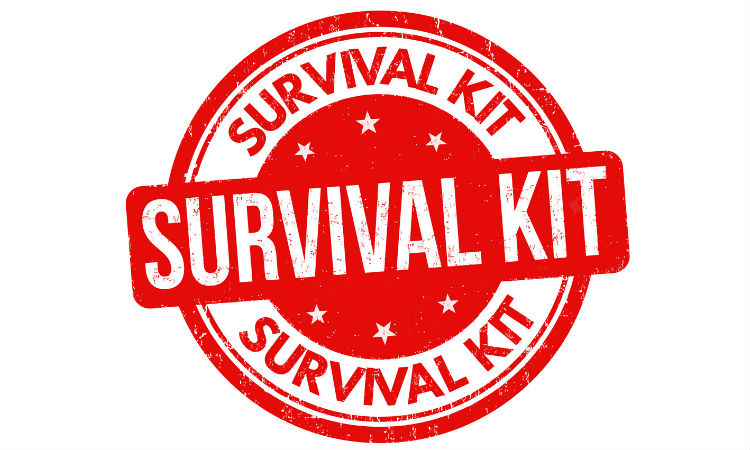The market is already very competitive as it is. Businesses are competing for the same market segments and the current market conditions don’t really make things any better either. To stay ahead of the market, you have to be agile and resilient as a business.

Becoming an agile and resilient business is more about creating strong fundamentals and covering the basics than about having advanced strategies. When you establish your business on strong fundamentals, you can maintain that flexibility and market lead over a long period of time.
So, which fundamentals do you need to strengthen to make your business more resilient? There are several simple steps you can take to achieve that goal, and we are going to discuss them in this article.
Business Financing on Demand
Having a way to finance projects or cope with sudden spikes in demand will help your business grow faster and capitalize on market opportunities better. There are more business financing options available on the market right now, but the best one to have is a business line of credit.

A business line of credit is basically a ready-for-use amount of loan that can be taken out and repaid flexibly. Since a line of credit is pre-approved, you don’t have to go through the long approval process when there is a sudden need for financing or a personal loan.
Business lines of credit and other forms of business loans are also designed with terms that work for business users. You can see this blog if you want to learn more about business loans and lines of credit, and how you can best maximize their benefits for business growth.
Workflows and Processes
The next fundamental you want to cover is the internal processes. Creating repeatable workflows and processes will help your business be more scalable and operate in an efficient and effective way. There are a lot of tasks associated with business operations; workflows are meant to standardize the handling of those tasks.
With a well-defined set of workflows, it is also much easier to maintain smooth operations. Every member of the organization can jump in and complete tasks in the same efficient and effective manner. On top of that, workflows let you find ways to further streamline tasks. Incremental improvement is the key here.
A Roadmap
Another fundamental to cover – and one that particularly gets neglected the most – is a roadmap for the business. Business roadmaps need to cover things such as when to expand the business, new product development plans, and other aspects that further guide business growth.
A roadmap acts as your guardrails when you need to make strategic business decisions. When there is a spike in demand and you have to expand the team, for example, you can review the situation based on the roadmap you have in place.
Disaster Recovery
Ideally, you should have a disaster recovery plan also. It will help to make your business more resilient in the long run. For example, you need to increase your focus on the natural disasters. Plus, there are many other business disruptions that you must consider.
For example, Cyber-attacks can take place. There can be a data breach. Additionally, you need to focus on IT and Telecom outages. When we talk about security attacks, the worse thing is that they are common these days.

The truth is that you cannot halt these attacks. However, you can take precautions on your part. When the precautions are there, you can even continue your business after a cyber- attack.
You can only come up with the recovery plan, if you have an understanding about the critical operations of your organization. The best approach is to prioritize your business functions through a risk assessment plan.
As a result, you will be able to understand the risks better and know how to make your business more resilient.
Coming up with an emergency response plan
The essential aspect is that you should have an emergency response plan ready. However, the planning regulatory requirements may vary depending upon the business. What is crucial is that you must have documentation onsite.
Your team should be able to execute the emergency plan as per the documentation. However, an emergency plan is incomplete without a ready workforce.
Preparing your workforce
When you want your business to operate smoothly after a disaster, then you need skilled workforce. You can only get a skilled workforce if your team has the necessary education. Well, the preparation of the team will require a lot of drills also.
The benefit of the education and drills is that your team can respond better in a state of emergency. Eventually these practices will help to make your business more resilient.

Introduce the concept of survival kit
You need to have the concept of survival kit in your organization. You need to have Chain of Command. It means who will be in-charge incase of an emergency. It is also essential to have a backup person to take charge if the assigned emergency head is not available.
The person in-charge must have the authority to make decisions. Plus, he must have all the resources he needs to perform his duties. Secondly, the person in-charge can make use of the business impact analysis tool.
The business tool will help to identify things that can help to keep the revenue flowing. The tool helps to identify the critical operations department-wise. As a result, it becomes easy to streamline things even in an emergency situation.
The person-incharge should also have a communication plan. The plan will lay down how you will communicate with your internal and external customers in case of an emergency.
Cover these basics and you will have a business that is not only resilient to market challenges, but also competitive and refined for disaster management at the same time. Dealing with uncertainty-ridden market such as the one we face today will not be a problem when you have agility and resilience on your side. Take your first step today towards making your business more resilient.


